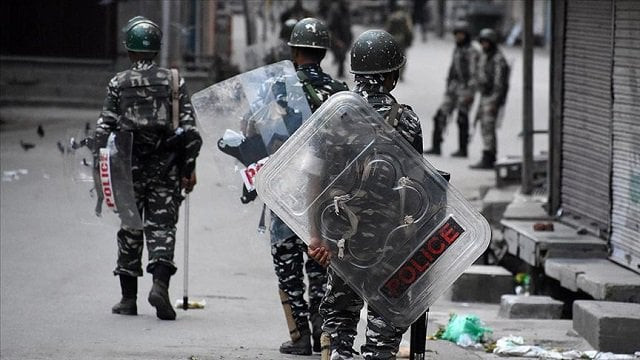Legal plan exposed in the J&K Bill 2019
The constitutional changes appear to highlight a plan to make the Parliament supreme

PHOTO: Anadolu Agency.
It is interesting to compare the constitutional frameworks of India and Pakistan. Both constitutions (not parliaments) are supreme. The Indian Constitution is more complex than ours and designed to retain the “structure theory” and to keep the country secular. The Indian Constitution has been drafted to keep different ethnic groups and regions in a federation where each land is classified by a certain “status category” as was the case of J&K under Article 370, or for Nagaland under 371. Each state, union and smaller union referred to territory has been designed to protect it from interference as was given in Article 35A.
Under the Indian Constitution, a Union territory (occupied J&K now) has no legislative assembly. Given this, the question arises as to why the BJP government introduced the reorganization bill and allowed J&K a legislative assembly. Is the J&K Bill 2019 revealing a greater plan at work?
If one were to analyse Presidential rule and emergencies by India, they were mostly used or applied by the Congress government to ensure that the central government suppressed unrest in a state or region by imposing Presidential rule. An example of this is the suppression of the Sikh movement after Operation Blue Star. The BJP government did not stop at the Presidential rule. Instead it resorted to the extreme step of scraping the constitutional guarantee. The BJP, unlike the Congress, seems more impatient and less forgiving. While ruthless at times, as the Congress imposed presidential emergency to crush the India freedom movement in the 1980s, it still did not revoke the constitutional cover. So why did the BJP decide otherwise now? Does the BJP plan to do something in eastern Punjab and this is a prelude to a bigger design? Will it give genocide a legal cover, as a lesson learnt from the Gujarat massacre?
The constitutional changes appear to highlight a plan to make the Parliament supreme. The legal drafting and shift indicates BJP’s plans to change the entire “structure theory” and tilt the balance towards the executive i.e. the cabinet and the prime minister. This would be needed to counter an ambitious China and fidget with the regional dynamics of Tibet, Ladakh, Iran and Afghanistan.
Moreover, the power of the administrator as assigned by the central government will be more than that of the elected legislative assembly. In other words, the central government will rule without having to invoke Presidential rule or proclaiming emergency every time. Secondly, the legislative assembly would change the laws within the J&K, favouring the right-wing Hindu government. Thirdly, the plan is also to change the population mix by allowing different communities identifying with the aggressive ultra-extremist religious Hindu wing to settle in the Valley, and work within the legal ambit.
What may possibly happen with the legislative assembly in J&K it that it may elect its own choice of people and change the demographics by appointing assembly members from a particular race, religion and sect. The assembly will provide a cover for these possible changes as clearly highlighted in the new law.
Published in The Express Tribune, September 4th, 2019.
Like Opinion & Editorial on Facebook, follow @ETOpEd on Twitter to receive all updates on all our daily pieces.















COMMENTS
Comments are moderated and generally will be posted if they are on-topic and not abusive.
For more information, please see our Comments FAQ